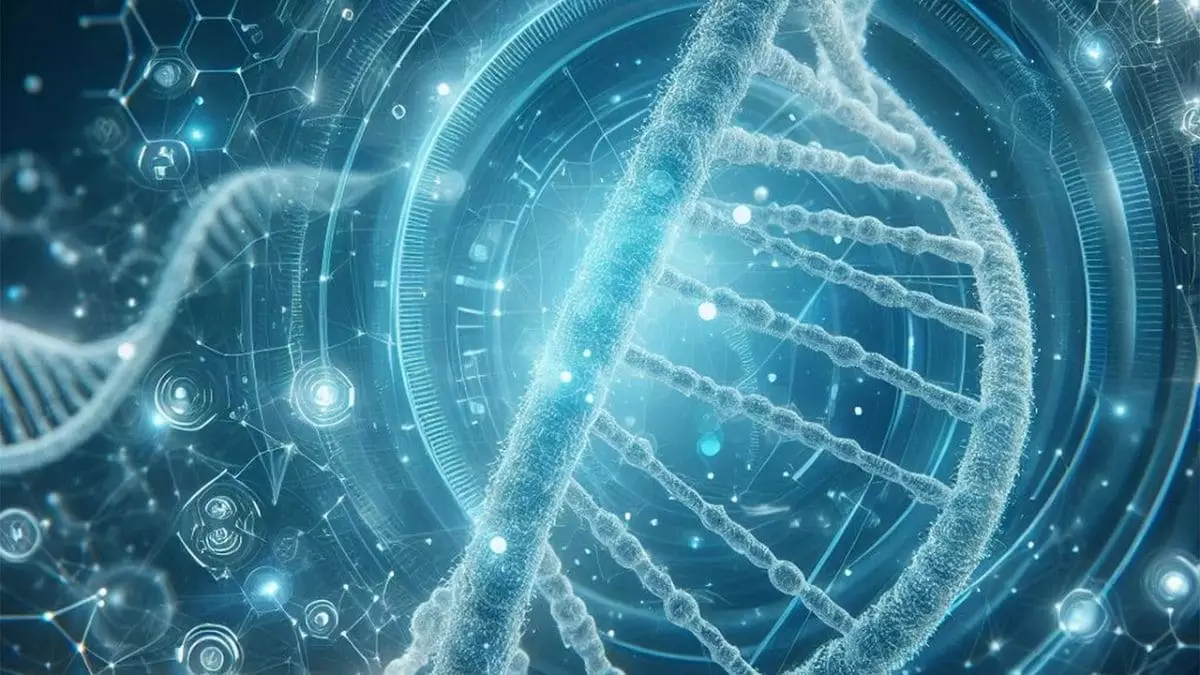Recent advancements in artificial intelligence (AI) have introduced a groundbreaking model known as Evo-2, which holds exciting potential for the future of genetic research. Unlike many previous models that primarily focused on analyzing protein sequences, Evo-2 represents a significant leap forward by encompassing an expansive dataset drawn from 128,000 genomes, which include a diverse array of life forms—from humans to bacteria. This capability positions Evo-2 as a transformative tool that promises to enhance our understanding of genetic structures and their functionalities.
Evo-2’s innovative design allows it to generate entire chromosomes and smaller genome sequences from scratch, offering scientists a robust platform for disease-related genetic research. Particularly impressive is Evo-2’s potential to decode non-coding gene variants that are linked to various diseases, a promising step toward bridging gaps in our understanding of genetics and the molecular basis of disease. This advancement comes from a collaboration between the Arc Institute, Stanford University, and NVIDIA, bringing together expertise in computational biology and AI technology.
What sets Evo-2 apart is its comprehensive training on an extensive set of genetic data, which includes coding and non-coding regions from eukaryotic genomes. According to reports, this training spans a staggering 9.3 trillion DNA letters, allowing the model to better interpret the complex structures intrinsic to varied life forms. This complexity is vital because eukaryotic genomes contain interspersed sequences that can significantly influence gene expression and functions.
Researchers, including Patrick Hsu from the Arc Institute, highlight that Evo-2 is not a static model; rather, it is designed to be adaptable for different research applications. By providing researchers with user-friendly web interfaces to generate and analyze DNA sequences, Evo-2 empowers scientists to customize its functions to meet their specific experimental needs. This flexibility could be crucial for various fields, from basic genetic research to therapeutic applications in medicine.
Promising Results and Future Directions
The initial performance of Evo-2 is promising, particularly in its capability to predict the impact of genetic mutations. For instance, preliminary assessments indicate that Evo-2 has shown a high level of accuracy in predicting effects related to the BRCA1 gene, which is pivotal in studies connected to breast cancer. Furthermore, the model has been tested on the genome of the woolly mammoth, demonstrating its proficiency in deciphering intricate genetic frameworks—an encouraging sign for future exploration in paleogenetics and evolutionary biology.
Despite remarkable achievements, researchers acknowledge that there are still refinements needed before the bioengineered sequences generated by Evo-2 can be applied successfully within living cells. As Brian Hie from Stanford University indicates, while the model has improved upon earlier iterations that struggled with generating complete genomes, continued enhancement is critical to ensure these sequences perform functional roles in biological contexts. The ongoing efforts to enhance Evo-2 will likely focus on developing regulatory DNA sequences that manage gene expression, a key element in understanding both normal biological processes and pathological conditions.
The implications of Evo-2 extend beyond basic genetic exploration; it is poised to influence synthetic biology and precision medicine significantly. As scientists explore its capacity to create novel regulatory sequences and analyze chromatin accessibility—which directly relates to cell identity—the potential for breakthroughs in personalized medicine and targeted therapeutic strategies becomes apparent.
Researchers like Yunha Wang of Tatta Bio foresee that with the adaptability of Evo-2, the model can inform the design of new human proteins based on insights gleaned from bacterial and archaeal genomes. This ambition illustrates the shift toward a more holistic approach in genetic engineering, transcending traditional protein design to encompass comprehensive genome modifications.
The Evo-2 AI model represents a pivotal advancement in genetic research, offering unprecedented tools to analyze and manipulate DNA at a fundamental level. As researchers continue to refine and validate its functions, the model is expected to play an increasingly vital role in understanding genetic regulation, developing functional DNA sequences, and paving the way for innovative therapeutics in the field of biotechnology and medicine. The intersection of AI and genetics is not just a promising trend but a necessary evolution in scientific exploration that will define the future of biology and health.

Leave a Reply